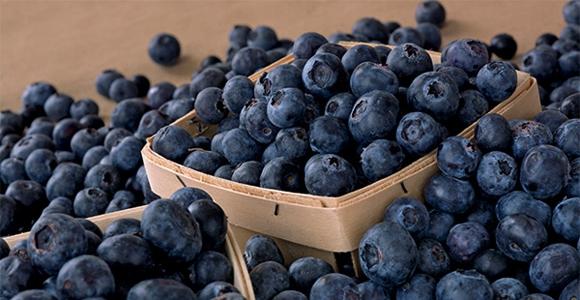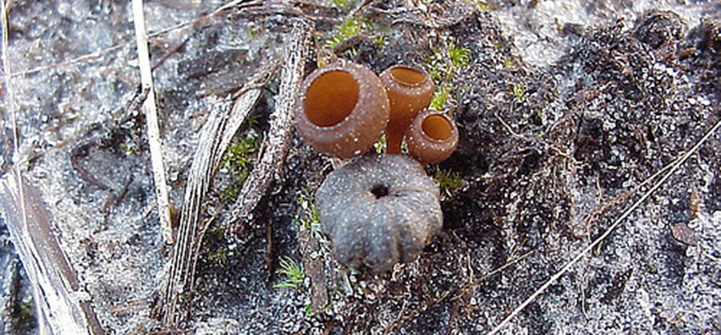Mummy berry, a disease caused by the fungus Monilinia vaccinii-corymbosi, is an important pathogen in many blueberry-growing regions of the United States. Infected berries are unsightly and unmarketable.Severely infected fields can suffer heavy yield losses. In addition, severe blighting of emerging leaf shoots and flower clusters can occur on susceptible cultivars. The name of the disease comes from the shriveled, pale appearance of infected fruit.
Symptoms and Disease Development Berries infected with mummy berry from the previous year are the initial source of mummy berry infections.
In early spring, small cupshaped spore-bearing structures called apothecia are produced from overwintering mummies on the ground. These mummies break dormancy around the same time that the blueberry buds begin to swell in spring. Mummies develop mature apothecia about one month later, when blueberry leaf shoots are emerging. Spores (ascospores) produced by the apothecia are liberated during cool, wet weather and are carried by air currents to the young emerging leaf and flower shoots. These spores infect and blight the young shoots and secondary spores called “conidia” are produced in great abundance on the blighted leaves. These conidia are carried by wind or insects to open flowers, where they infect developing fruit that is still in the flower stage. Prior to harvest, infected berries become light cream-color rather than normal blue and drop to the ground. These infected fruit, if left on the ground, form overwintering mummies and provide a source of disease the following year.
Control
Avoidance can be used by anyone who is producing blueberries in isolated locations. Unless the disease is present in wild or cultivated bushes nearby, growers and homeowners can successfully avoid mummy berry by planting only diseasefree, dormant (leafless) plants. This avoids introducing mummies or infected leaf shoots into the new planting.
Sanitation can be used to reduce the incidence and severity of disease by removing or burying the overwintering mummies. Hand raking or using a leaf blower around bushes can be used to move mummies to the row middles where they can be disked under or collected with a bagging mower. Mummies buried at depths of an inch or more are not able to grow to the surface and are thus prevented from producing spores.
Fungicidal control has proven very successful. Fungicides are used at leaf emergence to prevent primary (leaf shoot) infection, and again during bloom to prevent secondary (flower) infection. Because fungicide labels and recommendations may change, contact your local county extension office or land grant university for specific recommendations.
Resistance is the ability of the plant to withstand, or resist, infection by a pathogen. Some blueberry cultivars, such as Tifblue, are known to be highly susceptible to mummy berry disease, while others are much less affected. To help avoid problems with this disease, use less susceptible cultivars.
Related article:
Mitigating Mummy Berry Disease of Blueberry
Contact:
Bill Cline, North Carolina State University
Reference:
Annemiek Schilder and Bill Cline. Mummy berry. 2009. Retrieved 01 August 2010.



